Business
A tale of two countries – Drill, Baby, Drill vs Cap, Baby, Cap
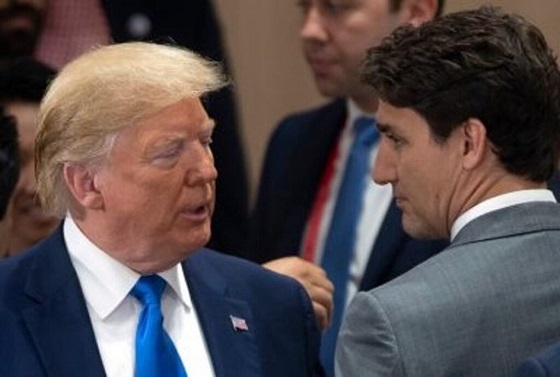
From EnergyNow.ca
By Deidra Garyk
Analysis of the U.S. Election and the Canadian Oil and Gas Emissions Cap
Monday, November 4, the Canadian federal government announced the long-awaited draft emissions cap for the oil and gas industry.
The next day, the world’s largest economy held an election that resulted in a decisive victory for the position of 47th President of the USA.
With the GOP (Republicans) taking a commanding lead with 53 out of 100 possible Senate seats, and two more still to be confirmed, they have a majority that can help move along their plans for at least the next two years. Rumoured expectations are that they’ll take the House too, which will further solidify President-elect Trump’s mandate.
As part of Trump’s campaign platform, Agenda47, he promised “to bring Americans the lowest-cost energy and electricity on Earth.” The agenda pledged that “to keep pace with the world economy that depends on fossil fuels for more than 80% of its energy, President Trump will DRILL, BABY, DRILL.”
The platform also states that under his leadership, the US will once again leave the Paris Climate Accords, and he will oppose all Green New Deal policies that impact energy development. He also plans to roll back the Biden administration’s EV mandates and emissions targets, while advocating for low emissions nuclear energy.
It isn’t a guarantee that he will do anything that he says; however, if the past is any indication, we can expect Trump to follow through on his energy and climate promises.
Even though Canada and the USA are on a contiguous land mass, they could not be farther apart in energy and climate ideology.
On the northern side of the border, a day before, Canada’s green avengers of the Liberal cabinet congregated for a press conference to jubilantly announce their emissions cap, which has been studied and determined to be a defacto production cap. CAP, BABY, CAP!
Claims that the new rules go after pollution, not production, should be met with scepticism. If pollution is the problem, there would be blanket emissions caps on all heavy emitting industries and imported oil and gas would be subject to the same requirements, but it is not. I’m not sure how else to read it other than a willful slight with a sledgehammer against the Canadian oil and gas industry.
Especially since Natural Resources Minister Jonathan Wilkinson said that this is a backstop to ensure the Pathways Alliance does what they say they will. I wonder if the Pathways folks feel like they have a giant target on their backs… and fronts?
The hour-long press conference was a lesson in how to deceive with a straight face. Most of the Liberals’ claims have either been discredited or are unsubstantiated as to be meaningless.
Wilkinson, a Rhodes Scholar, calls this cap an “economic opportunity” because he believes that for Canadian oil and gas, climate change is a competitive issue, for both combusted and non-combusted products. Square that circle when no other country on the planet has an emissions cap on its oil and gas industry.
Nonetheless, the Liberals expect production to increase, which is counter to what they say out of the other side of their mouths – that oil and gas demand will peak this year, and we are not going to be using it much longer so we should just shut it all down.
Wilkinson excitedly announced the need for thousands and thousands of workers to build the decarbonization infrastructure of the new energy future. However, the Department of Environment’s Cost-Benefit Analysis Summary contradicts this claim, citing thousands of job losses.
The Study also identifies that the costs from the plan will be borne by Canadians. The Conference Board of Canada expressed similar concerns, but they were dismissed by the politicians on stage.
Edmonton MP and Minister of Employment, Workforce Development, and Official Languages Randy Boissonnault, also known as “The Other Randy” for his ethical mis-steps, put on one of the best shows of the press conference. He speaks so convincingly that you almost believe him. Almost.
He claimed that when he was campaigning last election during the Covid pandemic, the number one topic at the doors was climate change. Edmontonians wanted to talk about climate change over the global pandemic that was disrupting their lives? Yeah, right.
The Other Randy praised Ministers Guilbeault and Wilkinson for working with industry on the regulations and promised that Canadian workers will be part of the consultation and final rules. Forgive me for being sceptical.
The Spiderman-like Steven Guilbeault, Minister of Environment and Climate Change, said that oil companies have seen record profits, going from $6.6 billion pre-pandemic to $66 billion post-pandemic, and the Liberals want that extra money used on projects they approve of, namely ones that are climate-related.
Guilbault believes this cap is necessary for prosperity and energy security, along with being good for workers and “for good union jobs”. It’s not often talked about, but within the feds’ climate plans is a push for unionizing jobs. It was top-of-mind for the Deputy Minister of Labour when I was part of a delegation to Ottawa last year. She was most interested in learning about how many oil and gas jobs are unionized and showed visible displeasure at finding out that most are not.
The press conference seemed to be more of a one-sided political bun fight, with a disproportionate amount of time spent talking smack about Pierre Poilievre, Premier Danielle Smith, and Premier Scott Moe. Perhaps demonstrating the Liberals’ trepidation about the future since the final regulations will come out late next year and go into effect January 1, 2026, when it’s likely they will be out of office.
With the climate zealots out of power, enforcement may be a challenge. What if companies don’t meet the arbitrary targets and deadlines imposed by the rules? What if companies don’t buy the required credits? A reporter asked, but Guilbeault didn’t give an answer in his response. I guess we will have to wait to see what changes are made to the Canadian Environmental Protection Act (CEPA), the enforcement regulations.
Wilkinson said climate change is a “collective action problem” that must be addressed as it is the “existential threat to the human race.” This gives you a sense of how they see things – there is a problem and government is the solution.
Meanwhile, energy policy is a “Day 1 priority” for Trump. As a businessperson, he understands that demand is growing, and limited regulations are the way to develop all forms of energy.
Even if industry can meet the emissions reduction targets – there are a variety of opinions on the proposed rules – it does not mean the regulations should be implemented. Canada’s real per capita GDP is 73 per cent of America’s, so as Canada goes hard on emissions reduction regulations, if investment moves south, that number is not going to improve. Don’t let them tell you otherwise.
Deidra Garyk is the Founder and President of Equipois:ability Advisory, a consulting firm specializing in sustainability solutions. Over 20 years in the Canadian energy sector, Deidra held key roles, where she focused on a broad range of initiatives, from sustainability reporting to fostering collaboration among industry stakeholders through her work in joint venture contracts.
Outside of her professional commitments, Deidra is an energy advocate and a recognized thought leader. She is passionate about promoting balanced, fact-based discussions on energy policy and sustainability. Through her research, writing, and public speaking, Deidra seeks to advance a more informed and pragmatic dialogue on the future of energy.
Alberta
COWBOY UP! Pierre Poilievre Promises to Fight for Oil and Gas, a Stronger Military and the Interests of Western Canada
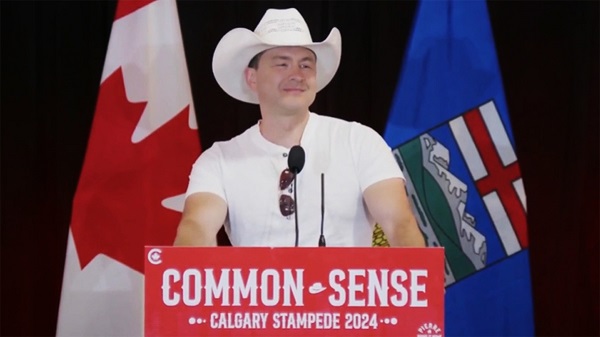
Fr0m Energy Now
As Calgarians take a break from the incessant news of tariff threat deadlines and global economic challenges to celebrate the annual Stampede, Conservative party leader Pierre Poilievre gave them even more to celebrate.
Poilievre returned to Calgary, his hometown, to outline his plan to amplify the legitimate demands of Western Canada and not only fight for oil and gas, but also fight for the interests of farmers, for low taxes, for decentralization, a stronger military and a smaller federal government.
Speaking at the annual Conservative party BBQ at Heritage Park in Calgary (a place Poilievre often visited on school trips growing up), he was reminded of the challenges his family experienced during the years when Trudeau senior was Prime Minister and the disastrous effect of his economic policies.
“I was born in ’79,” Poilievre said. “and only a few years later, Pierre Elliott Trudeau would attack our province with the National Energy Program. There are still a few that remember it. At the same time, he hammered the entire country with money printing deficits that gave us the worst inflation and interest rates in our history. Our family actually lost our home, and we had to scrimp and save and get help from extended family in order to get our little place in Shaughnessy, which my mother still lives in.”
This very personal story resonated with many in the crowd who are now experiencing an affordability crisis that leaves families struggling and young adults unable to afford their first house or condo. Poilievre said that the experience was a powerful motivator for his entry into politics. He wasted no time in proposing a solution – build alliances with other provinces with mutual interests, and he emphasized the importance of advocating for provincial needs.
“Let’s build an alliance with British Columbians who want to ship liquefied natural gas out of the Pacific Coast to Asia, and with Saskatchewanians, Newfoundlanders and Labradorians who want to develop their oil and gas and aren’t interested in having anyone in Ottawa cap how much they can produce. Let’s build alliances with Manitobans who want to ship oil in the port of Churchill… with Quebec and other provinces that want to decentralize our country and get Ottawa out of our business so that provinces and people can make their own decisions.”
Poilievre heavily criticized the federal government’s spending and policies of the last decade, including the increase in government costs, and he highlighted the negative impact of those policies on economic stability and warned of the dangers of high inflation and debt. He advocated strongly for a free-market economy, advocating for less government intervention, where businesses compete to impress customers rather than impress politicians. He also addressed the decade-long practice of blocking and then subsidizing certain industries. Poilievre referred to a famous quote from Ronald Reagan as the modus operandi of the current federal regime.
“The Government’s view of the economy could be summed up in a few short phrases. If anything moves, tax it. If it keeps moving, regulate it. And if it stops moving, subsidize it.”
The practice of blocking and then subsidizing is merely a ploy to grab power, according to Poilievre, making industry far too reliant on government control.
“By blocking you from doing something and then making you ask the government to help you do it, it makes you reliant. It puts them at the center of all power, and that is their mission…a full government takeover of our economy. There’s a core difference between an economy controlled by the government and one controlled by the free market. Businesses have to clamour to please politicians and bureaucrats. In a free market (which we favour), businesses clamour to impress customers. The idea is to put people in charge of their economic lives by letting them have free exchange of work for wages, product for payment and investment for interest.”
Poilievre also said he plans to oppose any ban on gas-powered vehicles, saying, “You should be in the driver’s seat and have the freedom to decide.” This is in reference to the Trudeau-era plan to ban the sale of gas-powered cars by 2035, which the Carney government has said they have no intention to change, even though automakers are indicating that the targets cannot be met. He also intends to oppose the Industrial Carbon tax, Bill C-69 the Impact Assessment Act, Bill C-48 the Oil tanker ban, the proposed emissions cap which will cap energy production, as well as the single-use plastics ban and Bill C-11, also known as the Online Streaming Act and the proposed “Online Harms Act,” also known as Bill C-63. Poilievre closed with rallying thoughts that had a distinctive Western flavour.
“Fighting for these values is never easy. Change, as we’ve seen, is not easy. Nothing worth doing is easy… Making Alberta was hard. Making Canada, the country we love, was even harder. But we don’t back down, and we don’t run away. When things get hard, we dust ourselves off, we get back in the saddle, and we gallop forward to the fight.”
Cowboy up, Mr. Poilievre.
Maureen McCall is an energy professional who writes on issues affecting the energy industry.
Business
Carney’s new agenda faces old Canadian problems

From the Fraser Institute
In his June speech announcing a major buildup of Canada’s military, Prime Minister Mark Carney repeated his belief that this country faces a “hinge moment” of the sort the allied countries confronted after the Second World War.
A better comparison might be with the beginning of the war itself.
Then, the Allies found themselves at war with an autocratic state bent on their defeat and possible destruction. Now, Carney faces an antagonistic American president bent on annexing Canada through economic warfare.
Then, Canada rose to the challenge, creating the world’s third-largest navy and landing an army at Normandy on D-Day. Now, Carney has announced the most aggressive reorienting of Canada’s economic, foreign and defence policies in generations.
Polls show strong support among Canadians for this new agenda. But the old Canada is still there. It will fight back. It may yet win.
The situation certainly would have been more encouraging had Carney not inherited Justin Trudeau’s legacy of severe economic and environmental restrictions—picking economic winners and losers rather than letting the market decide—and chronic deficits. The new prime minister would do well to dismantle as much of that legacy as he can.
Some advocate a return to the more laissez-faire approach of Stephen Harper’s government. But Harper didn’t confront a belligerent president hoping to annex Canada through the “economic force” of tariff walls.
The prime minister succeeded in getting Bill C-5, which is intended to weaken at least some of the restrictions on resource development and infrastructure, passed into law. He and the premiers pledge to finally dismantle generations of internal trade and labour mobility barriers. If we must trade less with the Americans, we can at least learn to trade with ourselves.
And the prime minister deserves high praise for reversing decades of military decline through increased spending and efforts to improve procurement. If Carney accomplishes nothing more than restoring Canada’s defences, especially in the Arctic, he will be well remembered.
That said, major challenges confront the Carney agenda.
There’s much talk about a new national energy corridor. But what does that mean? One KPMG executive defined it as a “dedicated, streamlined pathway for the energy, electricity, decarbonization, transportation and digital infrastructure.”
Yes, but what does that mean?
Whatever it means, some First Nations will oppose it tooth-and-nail. Not all of them, mind you. The First Nations Major Project Coalition is dedicated to assisting First Nations in working with government and the private sector for the benefit of all. But many First Nations people consider resource development further exploitation of their ancestral lands by a colonizing power. At the first major proposal to which they do not buy in, they will take the government to court.
What investor will be willing to commit to a project that could be blocked for years as First Nations and Ottawa fight it out all the way to the Supreme Court?
The prime minister, formerly a fervent advocate of combatting climate change, now talks about developing “conventional energy,” which means oil and gas pipelines. But environmental activists will fiercely oppose those pipelines.
There is so much that could go wrong. Sweep away those internal trade barriers? Some premiers will resist. Accelerate housing development? Some mayors will resist. Expand exports to Europe and Asia? Some businesses and entrepreneurs will say it’s not worth the risk.
As for the massive increase in defence spending, where will the money come from? What will be next year’s deficit? What will be the deficit’s impact on inflation, interest rates and sovereign creditworthiness? The obstacles are high enough to make anyone wonder how much, if any, of the government’s platform will be realized. But other factors are at work as well, factors that were also present in 1939.
To execute his mandate, Carney is surrounding himself with what, back in the Second World War, were called “dollar a year men”—executives who came to Ottawa from the private sector to mobilize the economy for wartime.
In Carney’s case he has brought in Marc-André Blanchard as chief of staff and Michael Sabia as clerk of the privy council. Both are highly experienced in government and the private sector. Both are taking very large pay cuts because, presumably, they understand the gravity of the times and believe in the prime minister’s plans.
Most important, Carney’s agenda has broad support from a public that fears for the country’s future and will have little patience toward any group seeking to block the prime minister’s agenda.
Millions of Canadians want this government’s reform efforts to succeed. Those who would put it at risk of failing will have to contend with public anger. That gives Carney a shot at making real change.
-

 Alberta9 hours ago
Alberta9 hours agoCOWBOY UP! Pierre Poilievre Promises to Fight for Oil and Gas, a Stronger Military and the Interests of Western Canada
-

 Alberta1 day ago
Alberta1 day agoAlberta Next: Immigration
-

 Business2 days ago
Business2 days agoThe Digital Services Tax Q&A: “It was going to be complicated and messy”
-
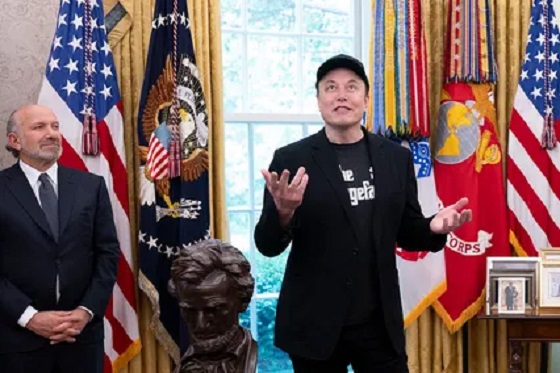
 International2 days ago
International2 days agoElon Musk forms America Party after split with Trump
-
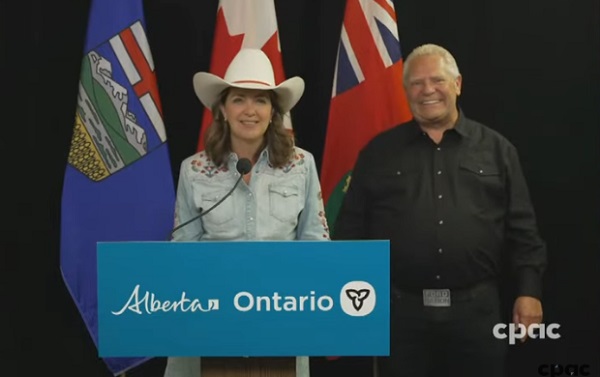
 Alberta10 hours ago
Alberta10 hours agoAlberta and Ontario sign agreements to drive oil and gas pipelines, energy corridors, and repeal investment blocking federal policies
-

 COVID-1913 hours ago
COVID-1913 hours agoFDA requires new warning on mRNA COVID shots due to heart damage in young men
-

 Alberta Sports Hall of Fame and Museum1 day ago
Alberta Sports Hall of Fame and Museum1 day agoAlberta Sports Hall of Fame 2025 Inductee Profiles – Para Nordic Skiing – Brian and Robin McKeever
-
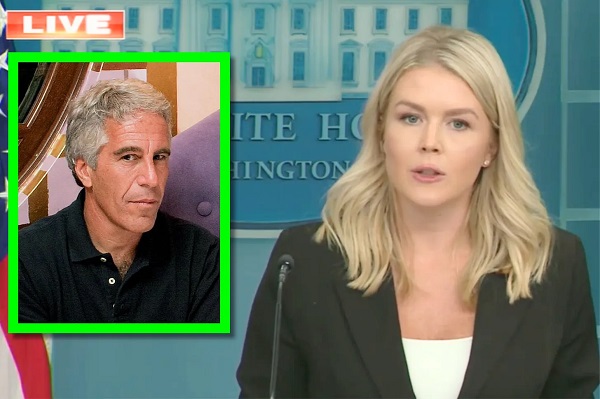
 Crime10 hours ago
Crime10 hours agoEyebrows Raise as Karoline Leavitt Answers Tough Questions About Epstein




